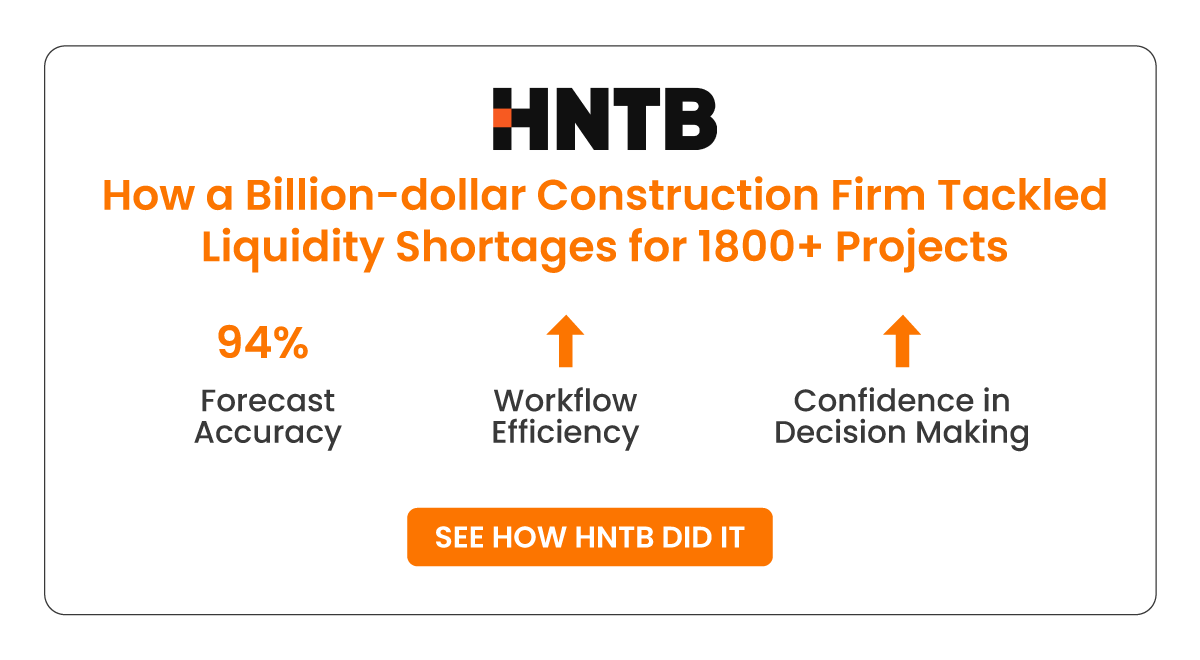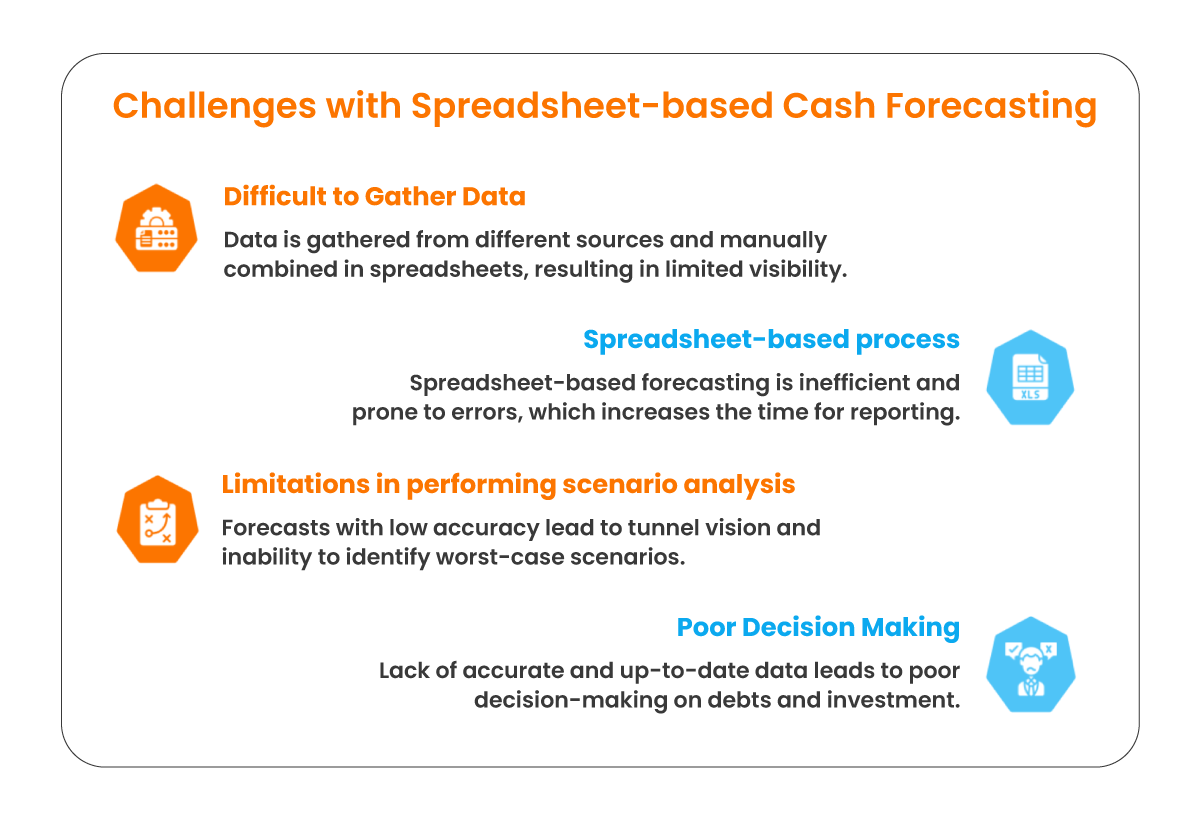Scenario modeling enables companies to create and analyze different financial scenarios by considering factors such as changes in revenue, expenses, and market conditions. This helps in developing contingency plans for managing cash flow in various situations.
On the other hand, scenario analysis in cash forecasting involves examining the effects of specific events or factors on cash flow. This includes identifying risks and opportunities and assessing their potential impact on cash flow.

Scenario Builder
With an intuitive interface, the Scenario Builder allows users to easily create scenarios on top of a base forecast. They can modify cash inflows or outflows, percentages, amounts, or foreign exchange rates to simulate different scenarios and evaluate their impact on cash flow.
Example
To build a $100 million factory, you will borrow $50 million and use $50 million
of your own cash. You might want to know:
Scenario 1: The effect on overall cash if you start the project next month as planned
Scenario 2: The effect on overall cash if the project is delayed 45 days due to slow bank approvals on the loan
Scenario 3: The effect on overall cash if you build the factory in two phases, spending $50 million in 45 days and another $50 million 9 months later
Forecast Snapshot Comparison
Users can save forecast versions as “snapshots” for future reference. These snapshots can be accessed at any time, enabling users to compare two snapshots side-by-side. Differences between the snapshots are visually highlighted using a heatmap. This comparison can be done between a base forecast and a scenario forecast, or between two scenario forecasts. Furthermore, users can conveniently compare multiple snapshots from different forecast sheets or scenarios in a single chart view.
Leveraging AI technology, the scenario-building and analysis capabilities empower treasurers to proactively analyze and mitigate potential losses. It aids in improving investment decisions, optimizing returns, identifying and preparing for cash shortages, effectively allocating financial surpluses, and managing foreign exchange risks.












